Unveiling the Science of Slip-Resistant Shoes
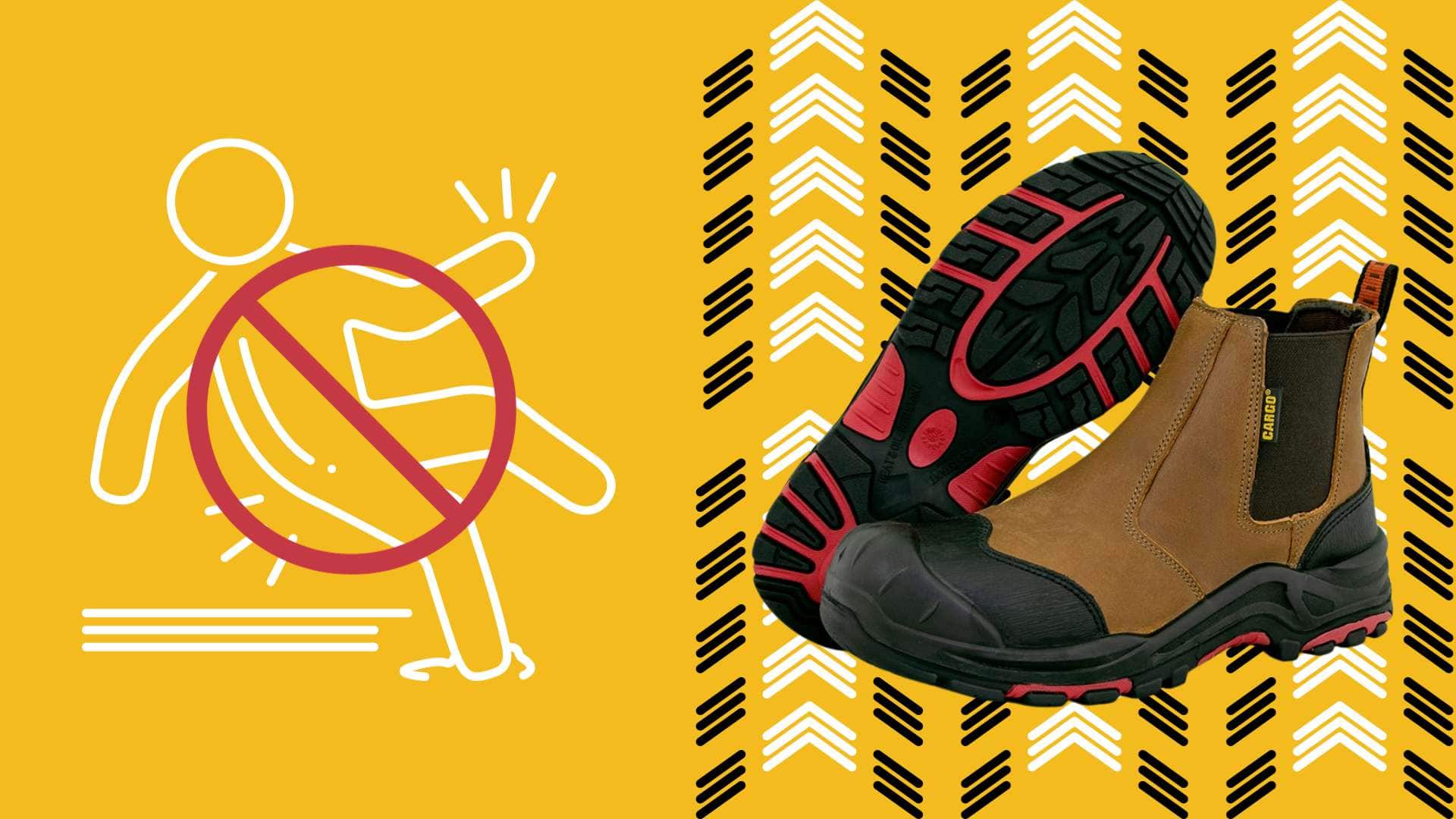
In the realm of workplace safety, slip-resistant work shoes represent a crucial line of defence against one of the most common workplace hazards: slips and falls. These specialised shoes are designed not just as a basic protective measure, but as a fundamental aspect of safety gear, particularly in environments where slick or wet surfaces present a constant risk.
The relevance of slip-resistant footwear extends beyond mere compliance with safety regulations. In industries ranging from healthcare and hospitality to construction and manufacturing, these shoes are essential in mitigating the risk of accidents that can lead to serious injuries. This makes understanding the technology behind slip-resistant shoes and their role in various work settings imperative for both employers and employees. Their implementation is a testament to a commitment to safety and a proactive approach to preventing workplace accidents.
TABLE OF CONTENTS
- Understanding Slip Resistance
- The Technology in Slip-Resistant Footwear
- Testing and Standards for Slip Resistance
- Slip-Resistant Shoes in Different Work Environments
- Advances in Slip-Resistant Technology
- Choosing the Right Slip-Resistant Footwear
Understanding Slip Resistance
Slip-resistant shoes are specifically designed to prevent slips, trips, and falls on wet, oily, or otherwise slick surfaces. What sets these shoes apart is their sole – the key element that provides the necessary grip. The effectiveness of slip-resistant footwear lies in the material of the sole and its tread pattern, both of which are engineered to maximise traction and minimise the risk of slipping.
The Science Behind the Traction
The traction of slip-resistant shoes is primarily a matter of physics. The sole is typically made from soft, rubbery materials, which have a higher coefficient of friction than harder substances. This increased friction is crucial in preventing slips, as it creates a stronger grip on slippery surfaces.
The design of the tread pattern also plays a significant role. Unlike smooth soles, slip-resistant shoes often feature intricate tread patterns with small slits or grooves. These treads act like sipes on car tyres, effectively dispersing liquids away from the sole. This dispersion helps to maintain direct contact between the shoe and the ground, reducing the likelihood of hydroplaning, where a layer of liquid reduces contact and causes slippage.
Moreover, the depth and spacing of the treads are calculated to maximise surface contact and grip. Deeper treads can offer better traction in more challenging conditions, such as outdoor work environments with mud or loose soil, whereas a tighter tread pattern is more effective for indoor surfaces that are prone to spills.
In summary, slip-resistant shoes combine material science and physics to provide a safer walking experience. The material of the sole, coupled with the strategic tread design, works together to reduce the risk of slips and falls in various work environments, making them an indispensable element of workplace safety.
The Technology in Slip-Resistant Footwear
As we delve deeper into the intricacies of slip-resistant footwear, it becomes evident that the core of its effectiveness lies not just in the surface-level design but in the very materials that make up the soles. These materials are selected for their unique properties that enhance grip and ensure stability in challenging environments. Let's explore the various materials used in the soles of slip-resistant shoes and understand how they contribute to overall safety.
Materials Used in the Soles
The effectiveness of slip-resistant footwear largely hinges on the materials used for the soles. Typically, these soles are made from a soft, rubber compound. This material choice is crucial as rubber naturally provides a higher coefficient of friction compared to harder materials. This higher friction translates to better grip on slick surfaces. Some manufacturers also incorporate other materials, like polyurethane, which offer a good balance between durability and slip resistance.
Design Features that Enhance Grip and Stability
Beyond the material, the design of the sole plays a pivotal role in enhancing slip resistance:
Tread Pattern: The tread pattern is carefully engineered to maximise contact with the ground while also channelling away liquids. Common designs include circular grips, hexagonal patterns, or interlocking geometries. These patterns are not just random but are strategically placed to provide the best possible traction in various conditions.
Outsole Design: The overall design of the outsole also contributes to slip resistance. Features such as a wider footprint increase the surface area of the sole, enhancing stability. Some shoes also include a bevelled heel design, which helps reduce the risk of slipping, especially when moving on sloped surfaces.
Siping: Siping involves cutting thin slits across the sole's surface. These slits open up when pressed against a surface, creating a suction effect that further improves grip. Originally used in cold-weather tyres, this technique has been effectively adapted into footwear design for added slip resistance.
Flexibility and Support: The balance between flexibility and support in the sole is essential. While a flexible sole can provide better grip by conforming to the shape of the surface, adequate arch support is necessary to maintain foot stability and comfort during long working hours.
In essence, the technology behind slip-resistant footwear is a sophisticated blend of material science and ergonomic design. It combines the right materials with intelligent design features to ensure maximum grip and stability, crucial for safety in workplaces where slippery conditions are a constant hazard.
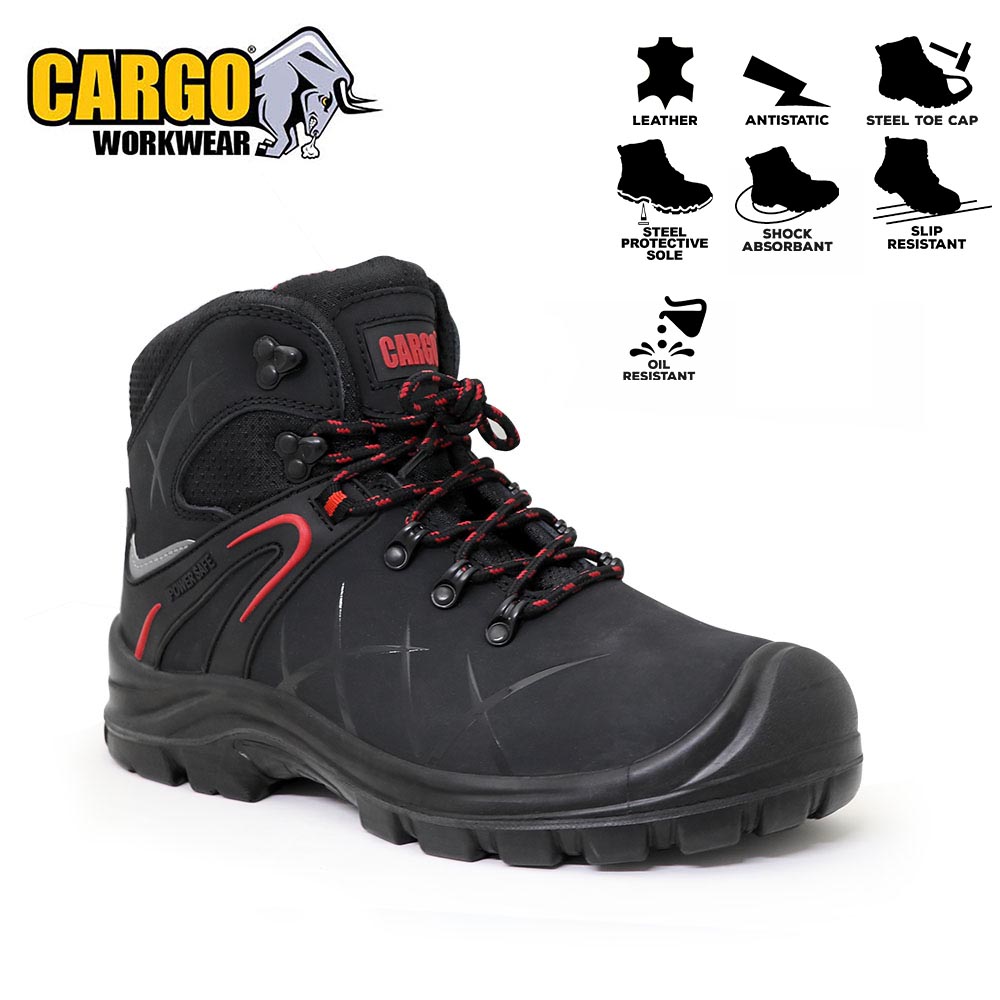 |
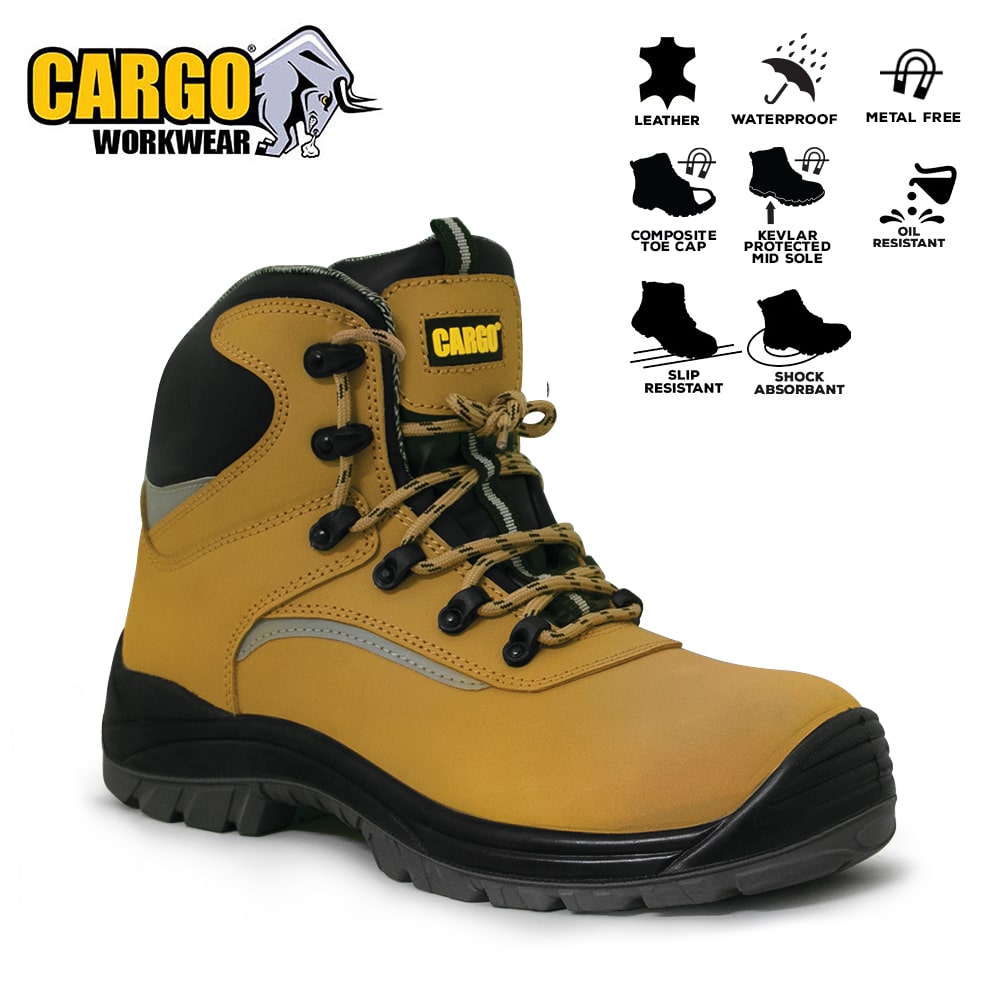 |
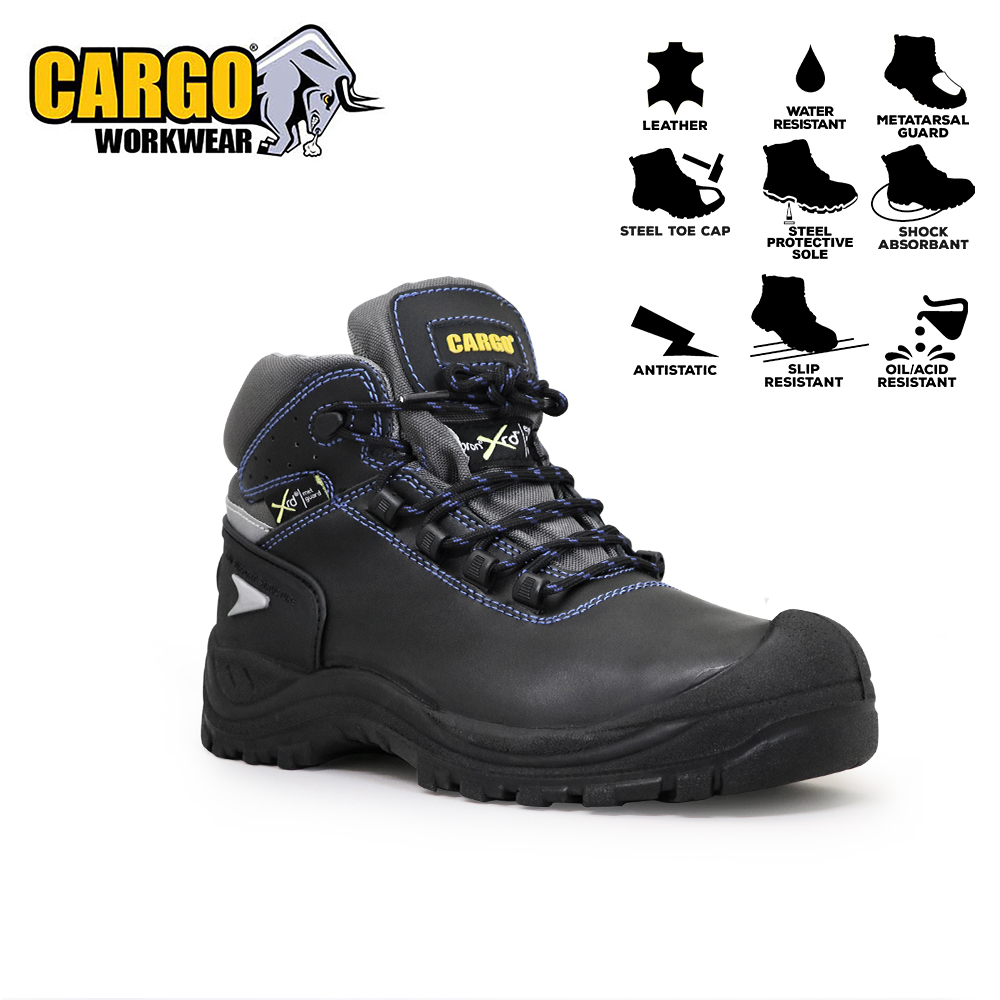 |
| Cargo Red Bear Safety Boot | Cargo Storm Waterproof Safety Boot | Cargo MetaBoot Safety Boot |
Testing and Standards for Slip Resistance
The effectiveness of slip-resistant footwear is not just based on design and materials but is also verified through rigorous testing and adherence to strict standards. These standards, particularly prevalent in Europe, ensure that the footwear meets certain criteria for safety and performance.
Overview of Testing Methods
In Europe, several standardised testing methods are used to assess the slip resistance of footwear. These methods simulate real-world conditions to evaluate the shoe's grip on different surfaces. Key tests include:
The Pendulum Test (EN 13287): This test uses a swinging pendulum to simulate a foot strike to the floor. The sole material is tested on both wet and dry surfaces, and the resistance is measured in terms of the pendulum's swing.
Ramp Test (ISO 13287): In this test, a wearer walks on a ramp covered with different contaminants like oil or water. The angle at which the wearer starts to slip determines the slip resistance.
International and Industry-Specific Standards
Slip-resistant footwear in Europe is governed by various standards, ensuring that they provide adequate protection in different work environments. Notable standards include:
EN ISO 20345: This is the standard for safety footwear for professional use and includes basic requirements for slip resistance.
EN ISO 20347: This standard covers occupational footwear for workplaces that do not require safety footwear with toe caps. It also includes specifications for slip resistance.
EN ISO 13287: This standard specifically focuses on the slip resistance of footwear, providing a method for testing under various conditions.
These standards are not just mere guidelines but essential benchmarks that manufacturers must meet. They ensure that the footwear provides a reliable level of safety and performance across a range of conditions, crucial for preventing workplace accidents and injuries.
By complying with these rigorous standards, slip-resistant footwear offers a dependable solution to maintain safety in workplaces, from busy kitchens and hospitals to industrial and construction sites, where the risk of slips and falls is a constant concern.
Learn more on Safety Footwear standards: Footwear Safety Standards: The Ultimate Guide To EN345
Slip-Resistant Shoes in Different Work Environments
The utility of slip-resistant shoes extends across various sectors, each with its unique challenges and requirements. Their role in enhancing safety is particularly crucial in industries like food service, hospitality, healthcare, and construction, where the risk of slips and falls is significantly higher due to specific working conditions.
Importance in the Food Service and Hospitality Industries
In the food service and hospitality industries, the prevalence of wet and greasy floors makes slip-resistant footwear indispensable. Kitchen staff, waiters, and hotel employees often navigate environments where spills are frequent, and the pace is fast. Slip-resistant shoes in these settings not only prevent accidents but also contribute to the overall efficiency and confidence of the staff, knowing they are safer while on the move.
Relevance in Healthcare and Medical Settings
Healthcare environments, including hospitals and clinics, demand footwear that ensures stability and safety amidst a myriad of challenges. These settings often involve spills of liquids and fast-paced movements in emergencies. For healthcare professionals, slip-resistant shoes are essential to maintain balance and quick mobility, all while ensuring their safety and that of their patients.
Use in Industrial and Construction Workplaces
In industrial and construction environments, the need for slip-resistant footwear is compounded by the presence of uneven terrain, debris, and various industrial fluids. Workers in these sectors are frequently exposed to conditions where the risk of slips and falls is high, making slip-resistant shoes a vital component of their safety gear. In these harsher environments, the shoes not only need to provide excellent grip but also need to be durable and protective against other potential foot hazards.
In each of these industries, slip-resistant shoes play a pivotal role in ensuring worker safety. They are a key element in a comprehensive approach to preventing workplace accidents, tailored to meet the specific demands of each work environment. Their widespread use underscores the importance of prioritising safety in all aspects of occupational wear.
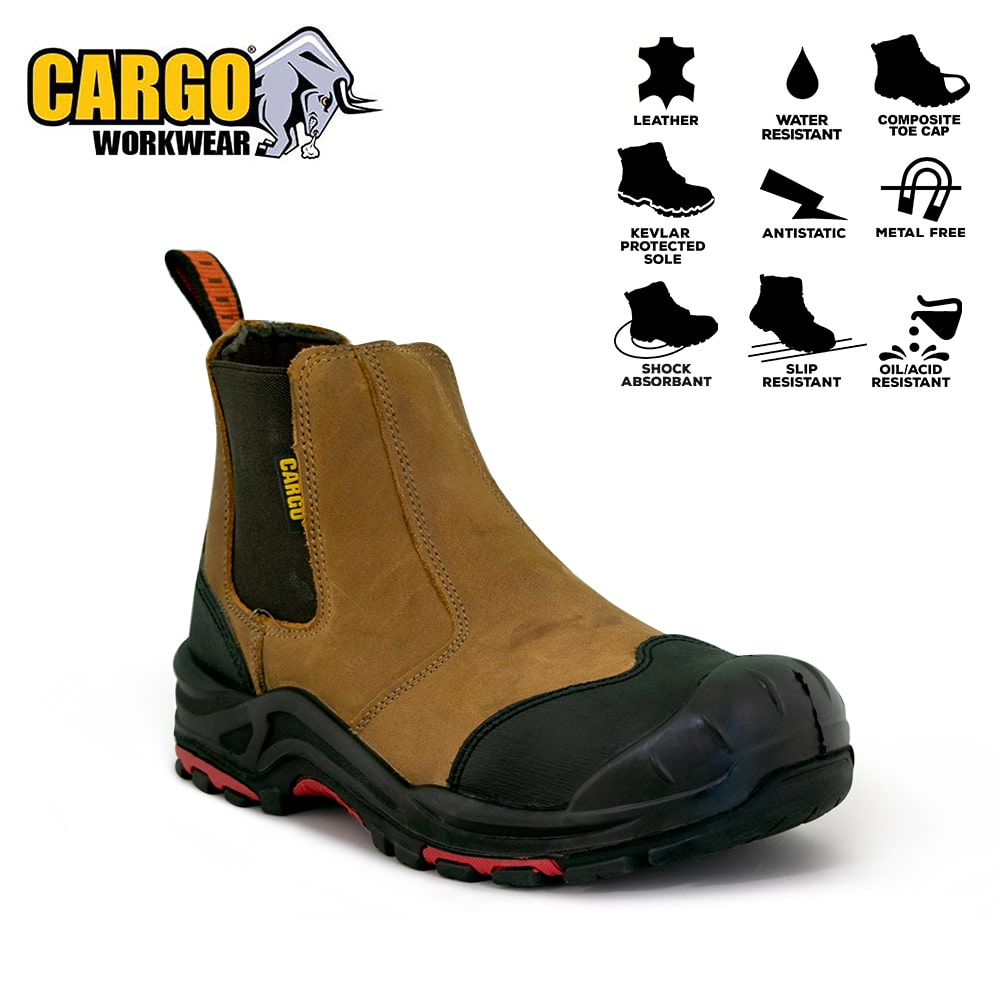 |
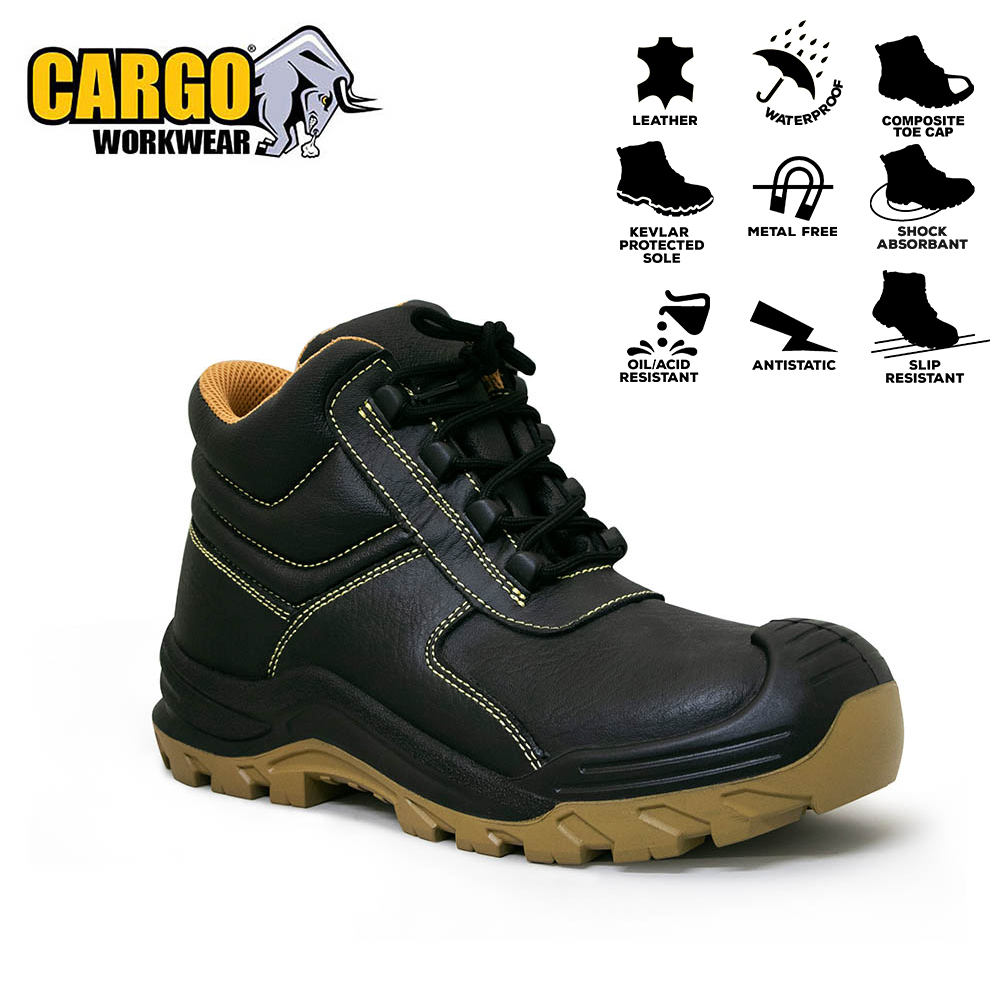 |
| Cargo Elite Dealer Slip-On Safety Boot | Cargo Roughneck Waterproof Safety Boot |
Advances in Slip-Resistant Technology
The field of slip-resistant footwear is continually evolving, with recent technological advancements enhancing both safety and comfort. As we look towards the future, the potential for further improvements is vast, driven by new materials, design innovations, and a deeper understanding of workplace needs.
Recent Technological Developments
Recent years have seen significant progress in the technology behind slip-resistant footwear:
Advanced Rubber Compounds: The development of new rubber compounds has improved the grip and durability of shoe soles. These materials provide better traction across a range of surfaces, including oil, water, and even soap.
Improved Tread Designs: Tread patterns have become more sophisticated, with designs that more effectively channel liquids away from the sole, increasing surface contact and reducing the risk of slipping.
3D Printing: The integration of 3D printing technology allows for the creation of customised sole patterns and designs, tailored to specific work environments or individual preferences.
Future Trends and Potential Improvements
Looking ahead, several trends are likely to shape the future of slip-resistant footwear:
Smart Technology Integration: Embedding sensors in footwear to monitor slip hazards in real-time and provide alerts could be a future trend. These sensors could collect data on walking surfaces, alerting wearers to potential slip risks.
Sustainable Materials: As environmental concerns become more prominent, the use of sustainable and recycled materials in footwear production is expected to increase. These materials must balance ecological considerations with the need for durability and slip resistance.
Customisation and Personalisation: Advances in manufacturing technologies may allow for greater customisation of footwear, not only in terms of fit but also in the specific requirements of different industries. Personalisation could include varying levels of slip resistance tailored to specific workplace conditions.
These advancements indicate a bright future for slip-resistant technology, combining enhanced safety with sustainability, personalisation, and smart technology. As these technologies develop, they hold the potential to significantly improve workplace safety across various industries.
Choosing the Right Slip-Resistant Footwear
Selecting the appropriate slip-resistant footwear is crucial for ensuring safety and comfort in the workplace. Different industries have varied requirements, and understanding these nuances can help in making an informed choice. Additionally, maintaining the footwear is key to preserving its slip-resistant properties over time.
Factors to Consider When Selecting Slip-Resistant Shoes
When choosing slip-resistant footwear, several factors should be taken into account:
Industry-Specific Requirements: The demands of a kitchen environment differ vastly from those of a construction site. It's important to consider the specific hazards of your workplace, such as the presence of oils, chemicals, or the type of flooring.
Certification and Standards: Ensure that the footwear meets the relevant safety standards, such as EN ISO 20347 or EN ISO 20345 in Europe. These certifications are a testament to the shoe's tested and proven slip resistance.
Material and Tread Design: Look for shoes with soles made of soft, rubber compounds and with effective tread patterns that suit your work environment.
Comfort and Fit: Comfort is crucial, especially for those who spend long hours on their feet. Proper fit not only enhances comfort but also ensures the footwear performs as intended.
Durability: Consider the durability of the shoes, as high-quality materials and construction will last longer and provide sustained protection.
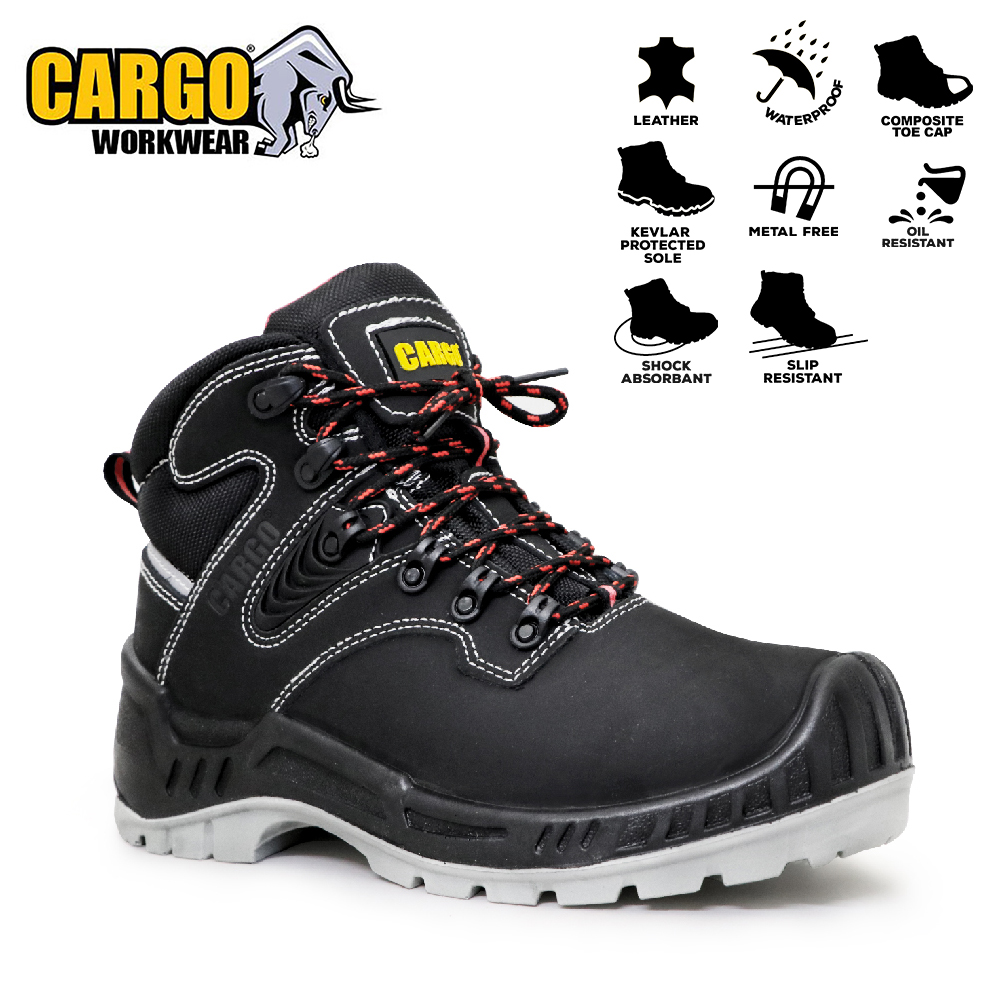 |
 |
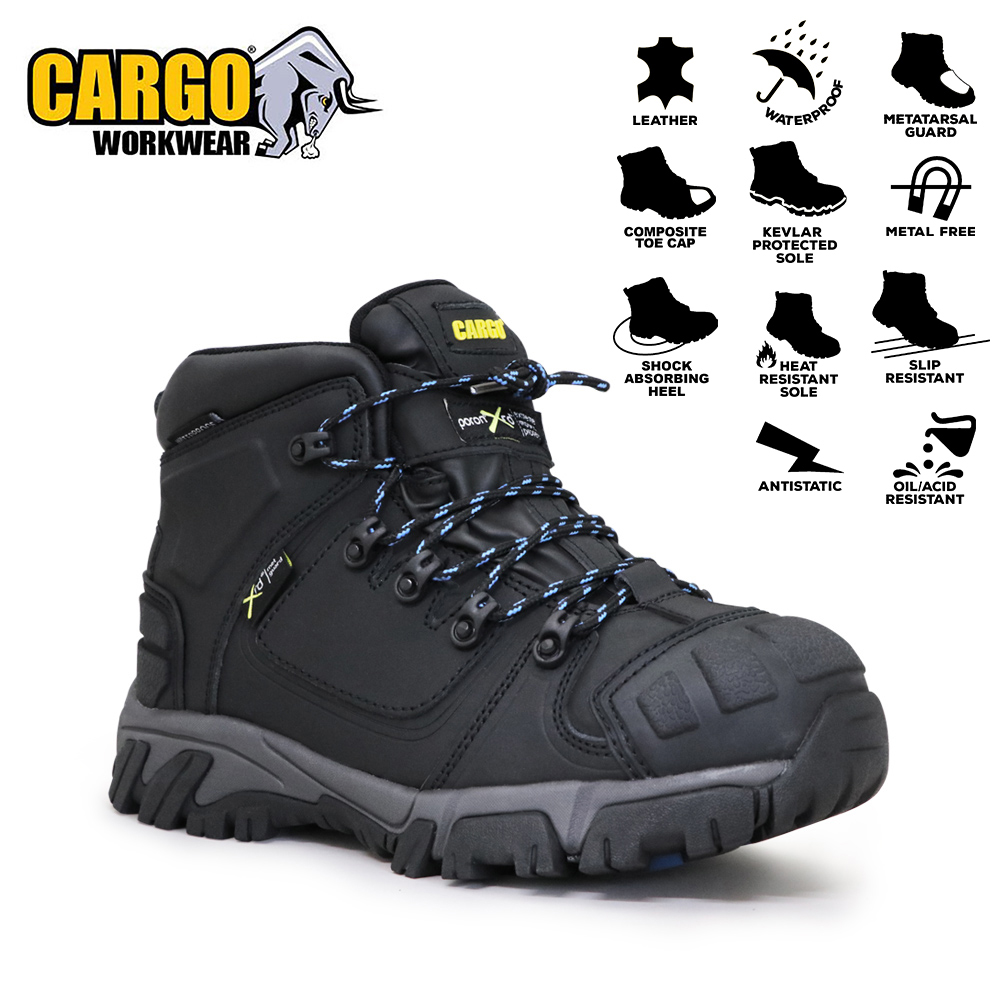 |
| Cargo Voyager Safety Boot | Cargo Maxitar Metatarsal Safety Boot | Cargo MetaMax Waterproof Safety Boot |
Tips for Proper Maintenance
Maintaining slip-resistant footwear is essential for ensuring they remain effective:
Regular Cleaning: Soles should be cleaned regularly to remove any accumulated dirt, grease, or debris that can impair slip resistance.
Inspect for Wear and Tear: Regularly inspect your shoes for any signs of wear, especially on the soles. Worn-out treads can significantly reduce traction.
Proper Storage: Store the footwear in a dry, cool place to prevent the degradation of materials.
Use Appropriate Cleaning Methods: Follow the manufacturer's instructions for cleaning. Some materials may require specific cleaning agents or methods to avoid damage.
By carefully selecting and maintaining slip-resistant footwear, workers can significantly reduce the risk of slips and falls, thereby enhancing safety in their work environments. These steps ensure that the footwear continues to provide optimal performance throughout its lifespan.
Conclusion
The journey through the world of slip-resistant footwear underscores their critical role in promoting workplace safety. From kitchens and hospitals to industrial sites and construction zones, these shoes serve as a fundamental barrier against one of the most common workplace accidents: slips and falls. The right pair of slip-resistant shoes can mean the difference between a regular workday and a potentially hazardous situation.
As we have seen, the field of slip-resistant footwear is not static; it is an area ripe with innovation and advancements. The future holds promising developments, from smart technology integration to sustainable and eco-friendly materials. These innovations will not only enhance safety but also align with broader environmental and technological trends.
In light of this, we urge our readers to not only prioritise safety in their choice of footwear but also to stay informed about the latest developments in this field. Choosing the right slip-resistant shoes is an investment in your safety and well-being at work. It's essential to select footwear that not only meets the required safety standards but also suits the specific demands of your industry.
Remember, in the realm of workplace safety, your footwear is not just a part of your uniform; it's a tool for prevention, a foundation for your day-to-day protection. Let's step forward with safety, one surefooted stride at a time.
Your email address cannot be published. Required fields are marked*
